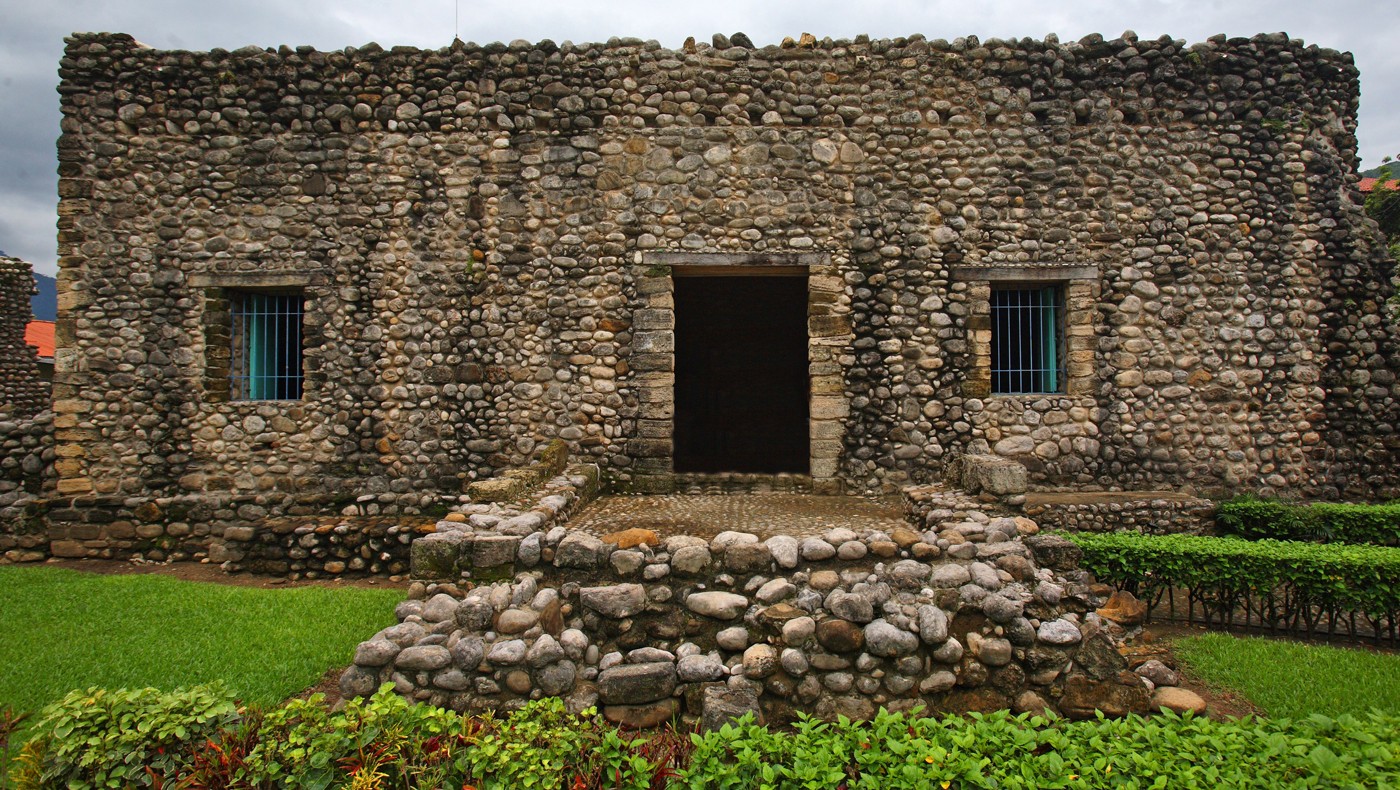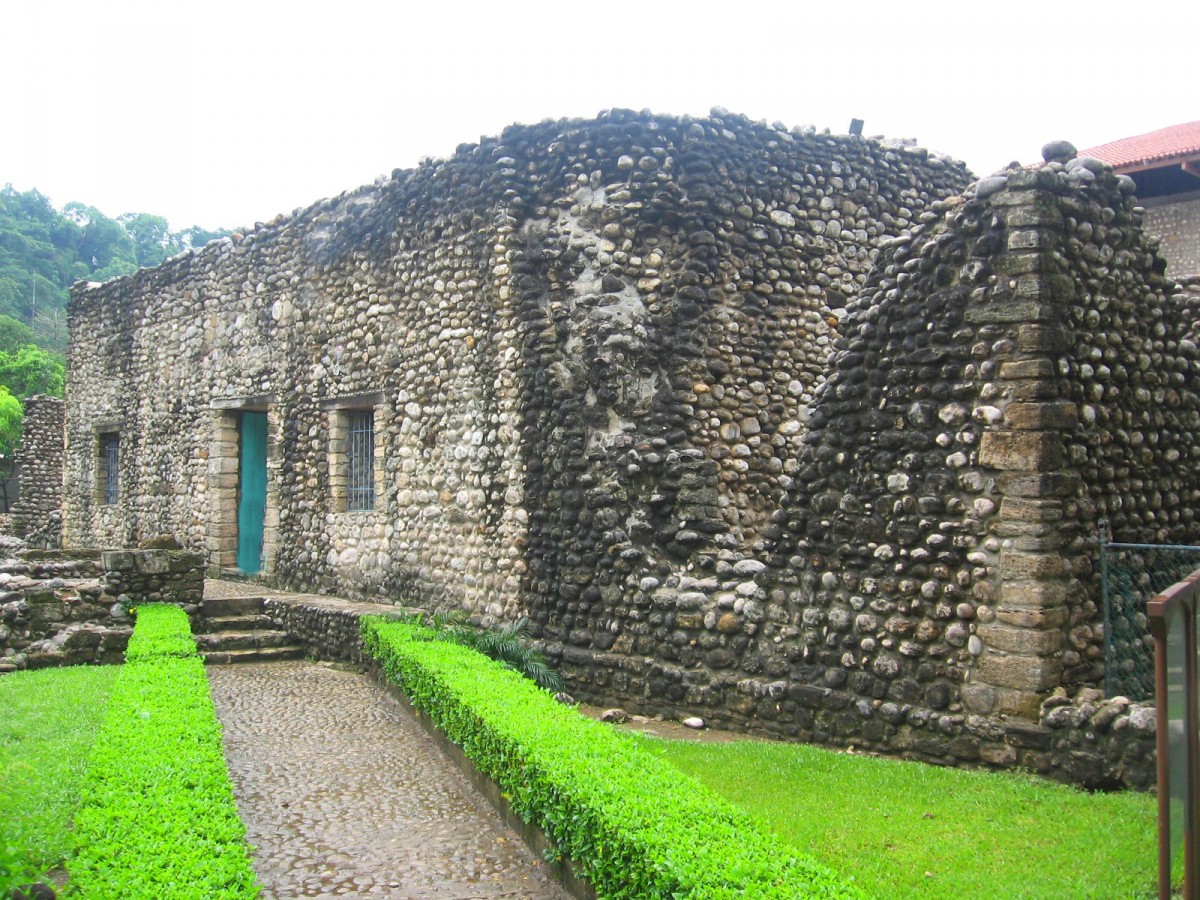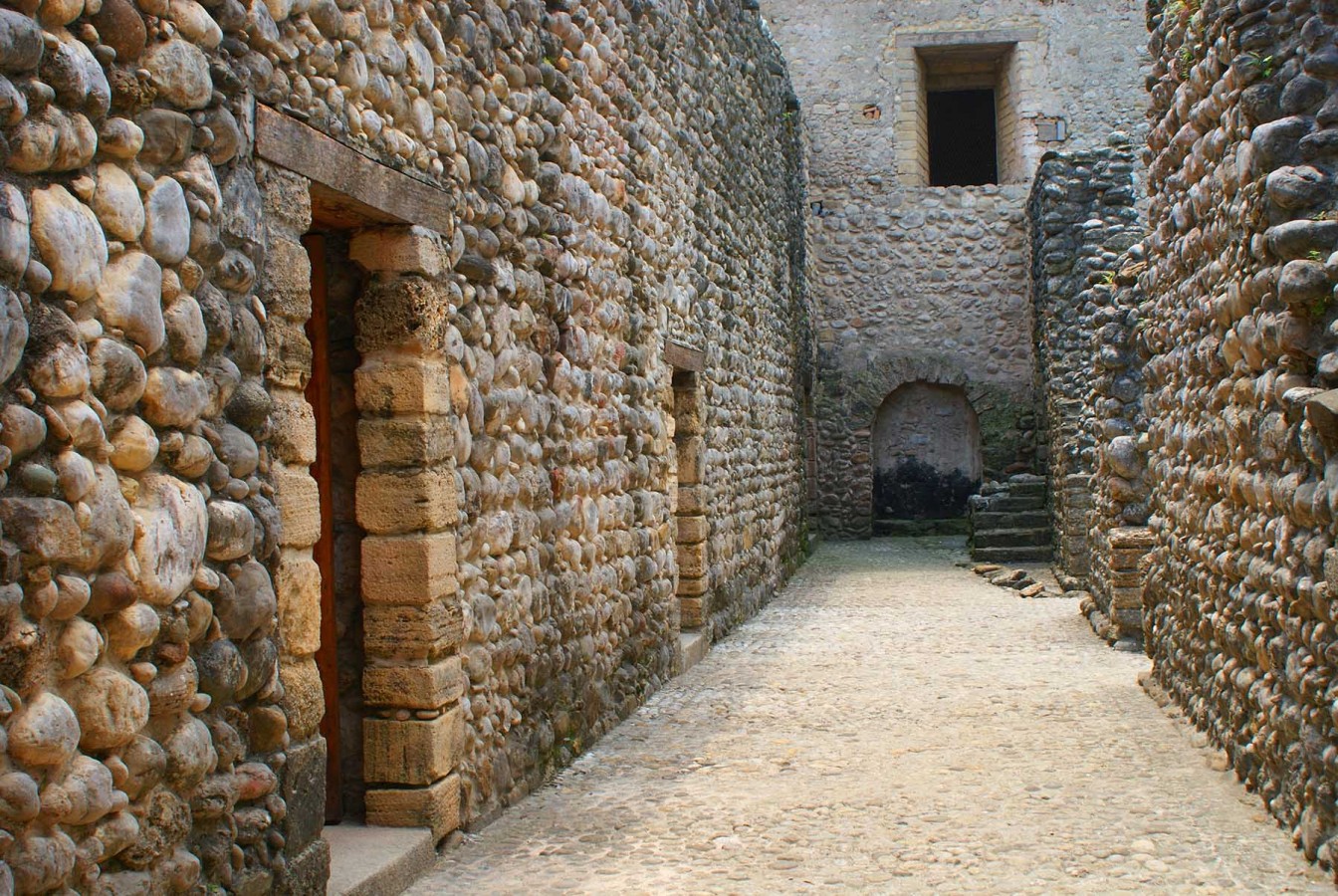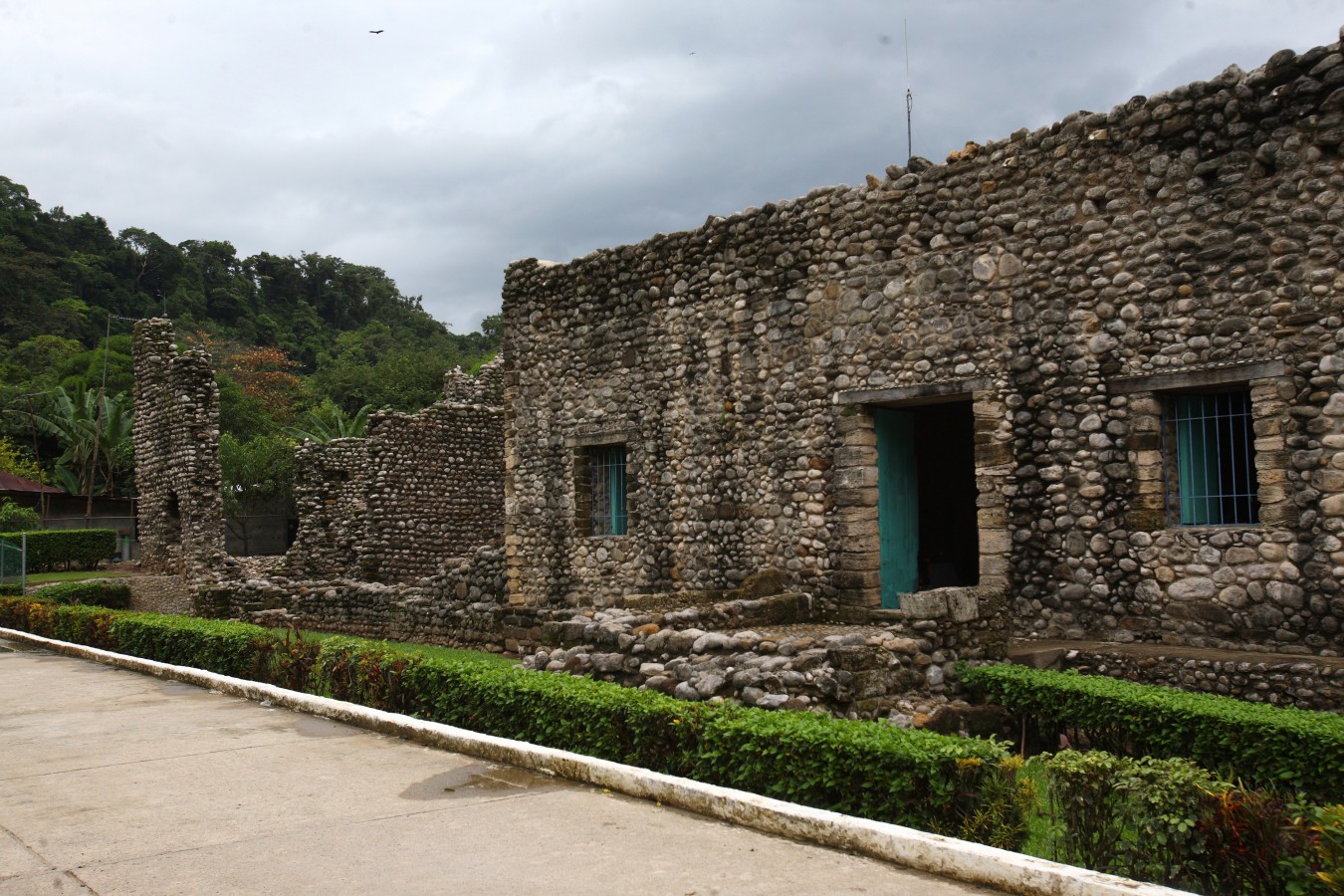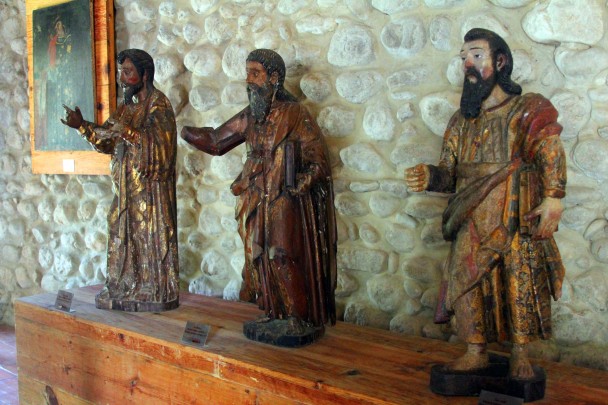Museo de la Sierra de Oxolotán
One of the original early sixteenth century Franciscan monasteries, built from large river stones, it came under the Dominicans 100 year later. It was the center for missionary work in the province of Tabasco during the viceregal period. It displays local archeological and historical material alongside a collection of religious objects.
Local
About the museum
The museum displays works of sacred art and is housed in the old Santo Domingo de Guzmán monastic building. Oxolotan is a small town in the municipality of Tacotalpa, nestling in the southern highlands of Tabasco. It has one of the state’s most interesting colonial buildings: the former monastery of Santo Domingo de Guzmán. Oxolotan was in fact the most important religious center in Tabasco during the viceregal period. It is thought that the monastery was build by Franciscan monks and that when they left, it passed into the hands of the Dominicans. Unlike many others, the church of Santo Domingo in Oxolotan was saved from destruction during the anti-clerical movement in Tabasco (1928-1936) started by the governor Tomás Garrido Canabal. However it was dismantled and converted into an army barracks and then a school. In 1979 the state government and the National Institute of Anthropology and History began restoration works to recover the historical building, as far as possible.
The Museum of the Sierra in Oxolotan is in the old monastery and its displays give historical background on the site during the pre-Hispanic period. It has photographs of the monastery prior to its restoration, oil paintings on canvas and religious imagery from the seventeenth to nineteenth centuries, eighteenth-century sculptures of saints carved in wood and painted using the estofado technique as well as beautiful fragments of viceregal altars.
The building itself is a key part of the Museum of the Sierra in Oxolotan, one of its finest exhibits in fact. It is an element of the architectural complex which comprised the Church and former Monastery of Santo Domingo. Archeological investigations have shown that the building had 11 bays. In the passageway there are signs of putlog holes (square holes high up the walls), which would have held horizontal beams needed to support an upper structure, indicating that there was once a second floor. An enclosing wall surrounded the atrium, but excavations show that it is 3 feet 7 inches below the present level of the plaza. It was also found that an altar was to be installed in the apse of the principal nave, because the signs of preparatory work to receive it are still there.
The excavation of the four buttresses and their distribution have revealed that the roof of the apse was intended to have a dome, although it seems that the roof was only ever made from wood and guano palm fronds (also known as xa’an or sabal), which were traditionally used to thatch the palapa roofs of peasant huts. Today the nave of the church has a wooden ceiling and is covered with a hipped roof with half-round tiles and a metal frame. It has been handed back to the community for use in worship.
In Nahuatl Oxolotan means “the place of enormous jaguars.” The first friars of the Order of Preachers or Dominicans arrived in New Spain in 1526, starting their missionary work straight away. They were initially based in the Royal City of San Cristobal de Las Casas and as more friars continued to arrive 20 years later, they began to organize missions to the mountainous area of present day Chiapas and Tabasco. Around 1572 they began to build the Monastery of Oxolotan under the direction of Fray Antonio de Pamplona. When Fray Tomás Aguilar was “vicar of doctrine” the Dominican administration of the Sierra of Tabasco determined that Oxolotan came under its control. Around 1611 the vicar of Oxolotan, Fray Juan de Bersástegui, acquired the large estate known as the Raudal de Istatelté, where cacao plantations were established to procure funds in support of monastic life. The monastery had shrunk by the early eighteenth century. The building was completely abandoned from the nineteenth to the twentieth centuries; it was overgrown, flooded and gradually decayed.
The former monastery, which was restored in 1988, is run as a local museum. Four bays were renovated for exhibition galleries, three of which are permanent and one is temporary. The church, sacristy and ante-sacristy are once again used for religious purposes. The sacristy has a sculpture of Christ which, according to popular ritual, is worshiped on the sixth Friday of Lent.
The collection has no clear timeline or exhibition plan, the pieces come from a variety of collections and are shown without text. Above all they are valuable and attractive examples of viceregal sacred art. The reception is in the first and largest gallery. The gallery has nine pieces, most notably the Virgin of Guadalupe, an old oil painting on cloth, as well as three other oils, three full-length sculptures of human figures and two wooden Solomonic columns (shaped like screws), which were once part of an altarpiece. Gallery 2 has an oil on cloth painting of Santiago of Galicia (also known as Santiago Matamoros), with two columns of different thicknesses and shapes throughout their length, and a pilaster (a square or rectangular-based column which was attached to a wall). Gallery 3 exhibits a carved and polychrome predella, or ornamental base of an altar, two more Solomonic columns and several other polychrome sculptures. Gallery 4 is dedicated to temporary exhibitions, such as the exhibition of works carried out in the historic center of Villahermosa in June 2016.
The Museum of the Sierra in Oxolotan is in the old monastery and its displays give historical background on the site during the pre-Hispanic period. It has photographs of the monastery prior to its restoration, oil paintings on canvas and religious imagery from the seventeenth to nineteenth centuries, eighteenth-century sculptures of saints carved in wood and painted using the estofado technique as well as beautiful fragments of viceregal altars.
The building itself is a key part of the Museum of the Sierra in Oxolotan, one of its finest exhibits in fact. It is an element of the architectural complex which comprised the Church and former Monastery of Santo Domingo. Archeological investigations have shown that the building had 11 bays. In the passageway there are signs of putlog holes (square holes high up the walls), which would have held horizontal beams needed to support an upper structure, indicating that there was once a second floor. An enclosing wall surrounded the atrium, but excavations show that it is 3 feet 7 inches below the present level of the plaza. It was also found that an altar was to be installed in the apse of the principal nave, because the signs of preparatory work to receive it are still there.
The excavation of the four buttresses and their distribution have revealed that the roof of the apse was intended to have a dome, although it seems that the roof was only ever made from wood and guano palm fronds (also known as xa’an or sabal), which were traditionally used to thatch the palapa roofs of peasant huts. Today the nave of the church has a wooden ceiling and is covered with a hipped roof with half-round tiles and a metal frame. It has been handed back to the community for use in worship.
In Nahuatl Oxolotan means “the place of enormous jaguars.” The first friars of the Order of Preachers or Dominicans arrived in New Spain in 1526, starting their missionary work straight away. They were initially based in the Royal City of San Cristobal de Las Casas and as more friars continued to arrive 20 years later, they began to organize missions to the mountainous area of present day Chiapas and Tabasco. Around 1572 they began to build the Monastery of Oxolotan under the direction of Fray Antonio de Pamplona. When Fray Tomás Aguilar was “vicar of doctrine” the Dominican administration of the Sierra of Tabasco determined that Oxolotan came under its control. Around 1611 the vicar of Oxolotan, Fray Juan de Bersástegui, acquired the large estate known as the Raudal de Istatelté, where cacao plantations were established to procure funds in support of monastic life. The monastery had shrunk by the early eighteenth century. The building was completely abandoned from the nineteenth to the twentieth centuries; it was overgrown, flooded and gradually decayed.
The former monastery, which was restored in 1988, is run as a local museum. Four bays were renovated for exhibition galleries, three of which are permanent and one is temporary. The church, sacristy and ante-sacristy are once again used for religious purposes. The sacristy has a sculpture of Christ which, according to popular ritual, is worshiped on the sixth Friday of Lent.
The collection has no clear timeline or exhibition plan, the pieces come from a variety of collections and are shown without text. Above all they are valuable and attractive examples of viceregal sacred art. The reception is in the first and largest gallery. The gallery has nine pieces, most notably the Virgin of Guadalupe, an old oil painting on cloth, as well as three other oils, three full-length sculptures of human figures and two wooden Solomonic columns (shaped like screws), which were once part of an altarpiece. Gallery 2 has an oil on cloth painting of Santiago of Galicia (also known as Santiago Matamoros), with two columns of different thicknesses and shapes throughout their length, and a pilaster (a square or rectangular-based column which was attached to a wall). Gallery 3 exhibits a carved and polychrome predella, or ornamental base of an altar, two more Solomonic columns and several other polychrome sculptures. Gallery 4 is dedicated to temporary exhibitions, such as the exhibition of works carried out in the historic center of Villahermosa in June 2016.
December 1988
Practical information
Monday to Sunday from 08:00 to 17:00 hrs. Last entry 16:00 hrs.
Free entry
Álvaro Obregón s/n, ex Convento de Santo Domingo de Oxolotán, C.P. 86890,
Tacotalpa, Tabasco, México.
Tacotalpa, Tabasco, México.
Services
-
+52 (993) 352 10 22
-
This email address is being protected from spambots. You need JavaScript enabled to view it.
Directory
Encargado
José Guadalupe Dumey López
This email address is being protected from spambots. You need JavaScript enabled to view it.
+52 (993) 3 52 10 22 ext. 358024

